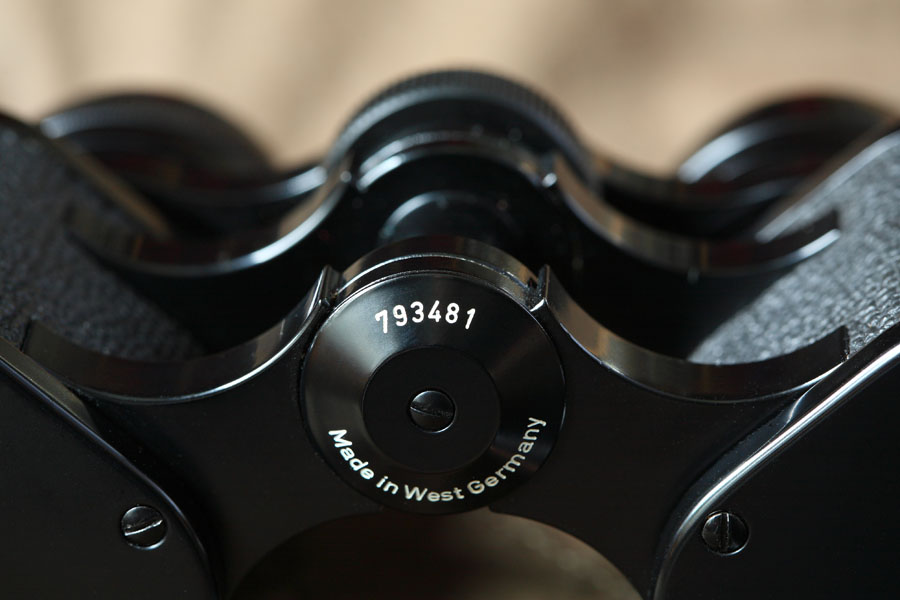Carl Zeiss Jena Deltrintem 8x30 Binoculars Serial Numbers

Ekaterina Velika Diskografija Download Chrome. By Holger Merlitz Long time before, almost a century ago, 8x30 binoculars of Porro prism design had already reached quite a reasonable performance level. This was so because 8x30 was about to establish itself as one of the standard sizes in military applications, at least in Europe, and there has always been plenty of money available for war toys at any times. 8x30 binoculars are compact, lightweight and fairly powerful. No surprise that these devices had quickly been accepted on the civilian market as well in rather peaceful times.

More Carl Zeiss Jena Deltrintem 8x30 Binoculars Serial Numbers images. Can anybody tell me a website where I can check the serial numbers for Carl Zeiss Binoculars. A Deltrintem model, which was. Of Carl Zeiss Jena 6X30 with. And high performance 8x30 Porro binoculars. 1: The Carl Zeiss Jena Deltrentis. Millions of original Zeiss Jena 8x30 were made. Zeiss serial numbers.
In this review, I will present a small, and in no way exhaustive, selection of these classic binoculars, covering both military and civilian samples. Despite of being made after WWII, some of them carry a heritage which reaches back well before the 1950s.
Que Rico El Mambo Perez Prado Download Free more. For comparison, I refer to earlier reviews of,, and. 1: The Carl Zeiss Jena Deltrentis (MDI issued, serial no. 4177769, 1973) The Zeiss Jena Deltrentis was no doubt the mother of most classic 8x30 Porro binoculars. On, this item is first showing up in 1920, along with the center focus version called Deltrintem. At that time, the body was made of magnesium and of featherlight 390 g. The wideangle eyepieces were designed by Albert Koenig, were free of distortion and contained 4 lens-elements.
A single layer anti-reflection coating with a bluish color was first added during WWII. According to, this ocular was replaced in 1947 by an Erfle design with 5 lens-elements and a certain amount of pincushion distortion in order to eliminate the. In 1978, the amber colored multi layer coating was introduced, and around 1990, when Docter took over the old Zeiss plant in Eisfeld, another improved coating of greenish color was used.
The production of this binocular was halted around 1995. The civilian, center focus version was also called Jenoptem during the 1980s.
The sample on Fig. 1 was not made for the regular army 'NVA', but for the ministry for internal affairs, which covered paramilitary law enforcement units - hence the imprint 'MdI' (Ministerium des Innern). Perhaps no other binocular in history has been cloned as often as the Deltrentis or the Deltrintem. Millions of original Zeiss Jena 8x30 were made, and even more copies have been produced in various countries, for their military, but also for the civilian market where they were sold under countless brand names. Two of those clones are also subject of the present review. 2: The Bulgarian military B8x30 (serial no. 220064, probably made around 1980).
Right: The list of items inside the case. In 1945 the Soviets disassembled the Zeiss Jena plant and transferred machines and also selected engineers to the East as a part of their war time reparations. It is generally believed that the blueprints of many Zeiss Jena products were taken over without any major modifications, yielding quite a decent lot of optical products made in USSR, including binoculars and camera lenses, among others. This B8x30 was sold to me as a 'Soviet military binocular', but in fact the factory logo has been identified by Per Beckman as belonging to the Bulgarian factory.
Most likely, it is a Zeiss Deltrentis clone as well and it may also be based on the same blueprints as the Soviet made clones. 3: The Chinese 8x30 military 62-8WYJ (serial no. 638089, current production). Right: Silica gel cartridges for drying Before the mid 1930s, the Chinese army imported their optics mostly from Germany and also from US, but by 1940, China had already established their own optical industry.